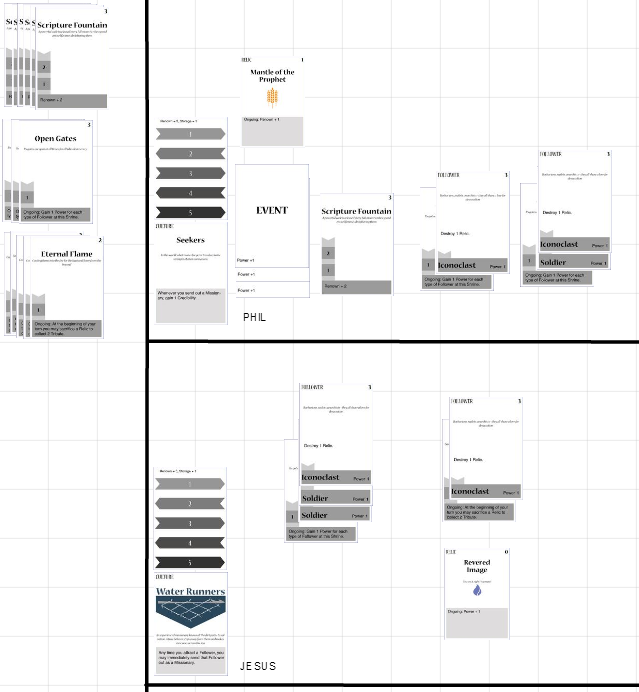Cram @ Gen Con: Takeaways Between One Year
Thanks to those who played Scrapture at the First Exposure Playtest Hall at #GenCon2016 ! There again today 4-8pm. pic.twitter.com/fMgxQSuK5G
— Phillip Schmitte (@SpiderJerome) August 5, 2016
Hi!
Phil, Cindy, and I are still here, I promise you. We’ve been working on the game as best we can. What really helped us came from Phil’s two trips to the table-top gaming con Mecca known as Gen Con. And they have been very important trips to the game’s development.
Truth Bombs at Gen Con 2015
When Phil took the game to Gen Con 2015, it was very different. The 2015 version of the game had Influence cards, which players could use to draw cards, gain points, etc. At that point, Phil considered the game completed. There was some complexity to it, but it had solid mechanics that let you do interesting things once you figured it out.
He presented the game to some designers at the Game Crafter Community Game Night (they’re the ones that print our game). It was there where fellow designer Andrew Voigt – designer of Perspective – delivered the strongest criticism about the game it had ever received.
“If I went over to a friends house and they asked me to play this game, and after we were done they asked “do you want to play again?”, I would say “no thank you”.
Phil said it hit him so hard that he still remembers it.
Scrapping, Stripping, and Simplifying
After feedback with the different Gen Con crowd, this was how the game changed:
- We cut Influence and Cultures as cards from the game.We are now using the word “Influence” to mean victory point. Cultures are now just a flavorful aesthetic for your cult.
- Shrines are now part of a player’s starting setup and are the focal points for interactions.
- Followers are now the main currency of the game. You work to attract and use them to “power” your actions.
- Relics are the only way you can score points now, so you need to interact with them to win. They are now center stage in terms of the game theme as well.
The game now now has a much more simple core gameplay loop Now that the heart of the game centers on three types of cards instead of five, it’s more accessible.
Two more great groups of Scrapture playtests at #GenCon2016. Thanks for all the awesome feedback! pic.twitter.com/cqdlDcNblw
— Phillip Schmitte (@SpiderJerome) August 6, 2016
What Happened One Year Later?
- There is some confusion and/or loopholes on some of the cards. They aren’t major but they need to be fixed for clarity and to plug any exploits.
- We’ve still had issues with a tiebreaker option. Phil asked the groups that played for good ideas on a tiebreaker, and he thinks he has figured it out.
- One game had a problem where a player was essentially eliminated from play because they did not attract enough followers. This might turn off new players, so Phil has a potential fix for that as well.
- Everyone loves the art and the flavor.
- The game description was appealing and drew people to come play it.
The most important aspect of this feedback is that it’s coming from regular players. The help of other designers has been essential to getting the game this far. However, game designers are always looking to give you feedback and they aren’t always interested in the kind of game you’re making. This event was nice because the people who played chose to play it. In the end, you can’t beat the satisfaction of watching people enjoy your game and have fun.


